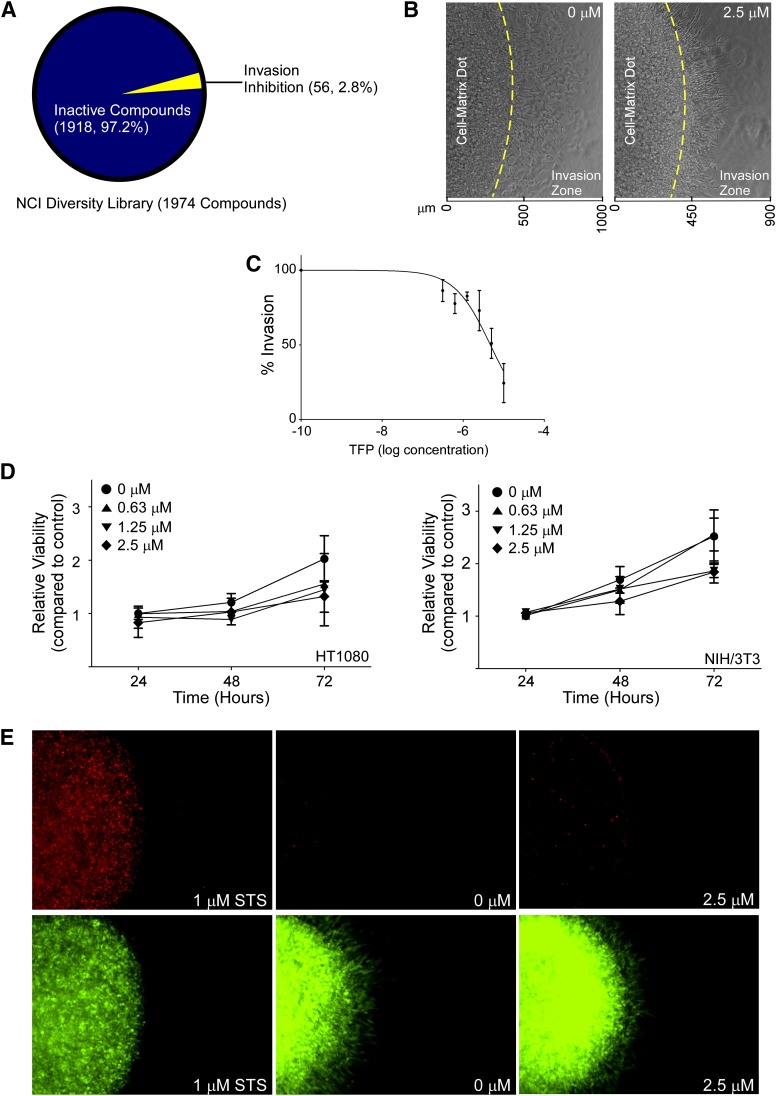Fig. 1.
Identification of the new role of TFP on inhibition of cancer cell invasion. (A) Classification of the compound library according to anti-invasive ability. Of the 1974 compounds assessed, 56 compounds were found to inhibit cancer cell invasion at 10 μM concentration. (B) Representative bright field images of HT1080 cells in a three-dimensional invasion assay demonstrates TFP reduces cell invasion at 2.5 μM concentration compared with vehicle control. Cells in the invasion zone were compared. (C) Dose dependent inhibition of HT1080 cell invasion examined by the three-dimensional invasion assay in the presence of different doses of TFP for 18 hours. (D) No significant effect by TFP on HT1080 (left panel) and NIH/3T3 (right panel) cell growth examined in a two-dimensional platform by MTT assay in the presence of different concentrations of TFP up to 72 hours. (E) TFP at 2.5 μM concentration does not cause HT1080 cell death as examined by propidium iodide staining in the three-dimensional invasion assay. Staurosporine (STS) serves as a positive control for cell death.

